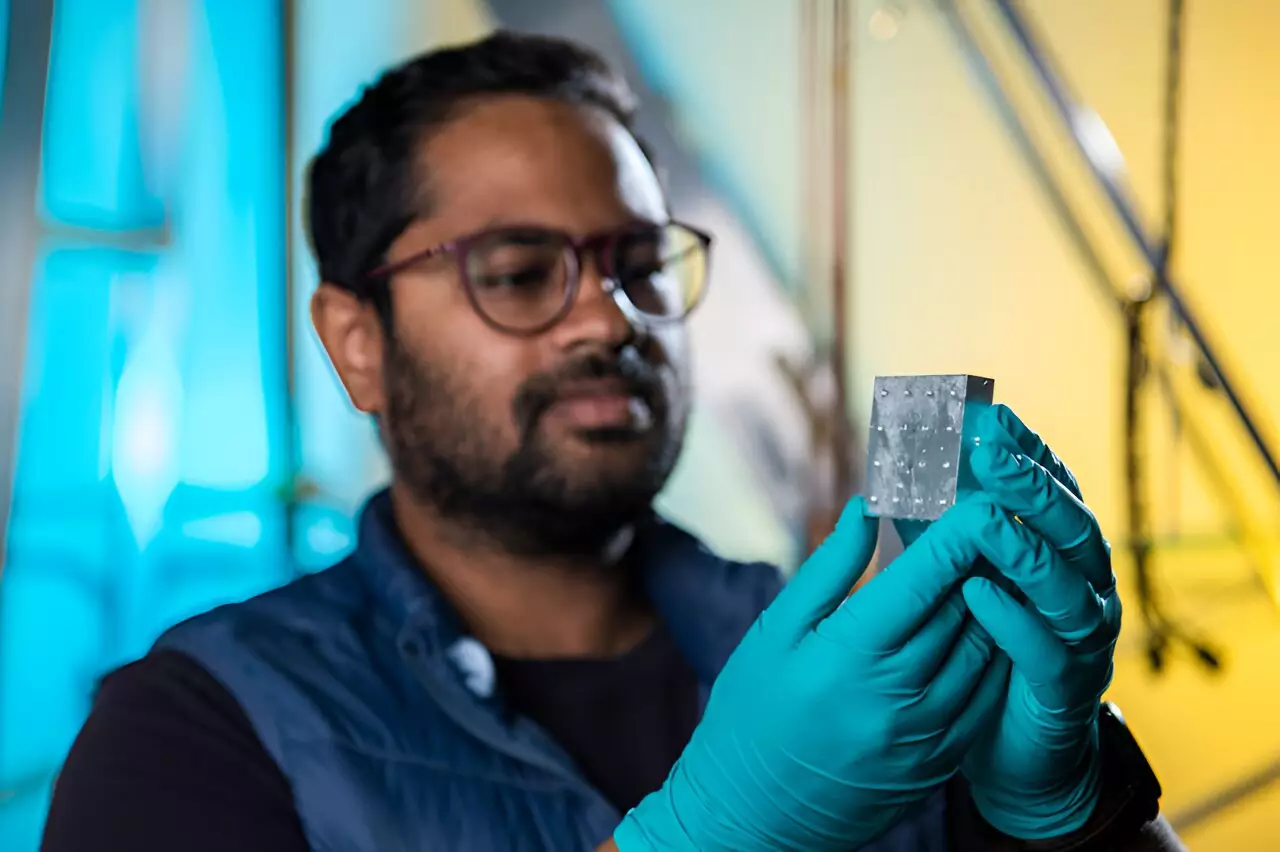In the quest to understand the universe, dark matter stands as a profound enigma. Despite constituting approximately 27% of the universe’s mass-energy content, it remains invisible and undetectable through conventional means. Scientists have been attempting to unravel its mysteries not by direct observation but through indirect evidence, focusing primarily on its gravitational effects on visible matter. The challenge lies in the fact that the signals pointing towards dark matter interactions are incredibly faint, leaving researchers in a frustrating position. However, groundbreaking advancements in quantum techniques offer a flicker of hope, suggesting we may soon comprehend the unseen forces orchestrating our universe.
Quantum Techniques: A Game Changer
Recent research led by a collaborative team from the U.S. Department of Energy’s Fermi National Accelerator Laboratory and the University of Chicago has turned the traditional methods of dark matter detection on their head. By enhancing the signals associated with dark matter interactions, they have made a significant leap in the race to find solutions to this long-standing puzzle. The key to their success lies in the innovative application of quantum techniques that boost signal capabilities by a remarkable factor of 2.78. This leap forward is not just a statistical victory; it is an iconic illustration of how quantum information science can bridge gaps in our understanding of fundamental physics.
The researchers tailored an experimental setup that exploits the synergy between microwave cavities and superconducting qubits. Qubits, which myriad research has shown can manipulate quantum states with extraordinary precision, facilitated both enhanced signal generation and noise reduction. By crafting a special quantum state within a microwave cavity, they have made the detection process not only more sensitive but considerably more efficient.
Preparing for Breakthroughs
The experimental approach involved placing the microwave cavity in a “Fock state,” an advanced quantum regime that allows for a well-defined photon number. Essentially, increasing the Fock state’s order raises the probability of dark matter interactions leading to observable signals. This pivotal preparation signifies a fundamental shift from earlier experiments that began with a non-activated state; akin to trying to push a swing that has yet to start moving.
This innovative engagement optimizes the detection process and allows the interaction between dark matter and photons to be measured with unprecedented accuracy. Ankur Agrawal, a graduate student spearheading the research, emphasized the significance of confirming basic quantum principles in a highly practical setting. This validation not only reaffirms established quantum theories but also illuminates the path toward future discoveries.
Overcoming Noise: The Thermal Battle
Noise has been the Achilles heel for many scientific measurements, often obscuring the faint signals scientists desperately seek. In this research, cooling the microwave cavity with a dilution refrigerator to one-one-hundredth of a Kelvin proved pivotal for minimizing the impact of thermal noise. By creating this near-absolute-zero environment, the team effectively stifled any disruptive interference, which otherwise could have masked the subtle clues left by dark matter interactions.
Through the engineering of qubit-photon interactions, the experimental team employed techniques that prevent photon obliteration during measurements. This groundbreaking method enables multiple observations of the same photon, effectively silencing the noise and amplifying the signal strength. The analogy used by the researchers likening their technique to pushing a child on a swing further simplifies an otherwise complex process. By getting their microwave cavity into action—much like getting a swing moving—they have optimized their chances of detecting the evasive dark matter signatures.
A Broader Impact: Potential Beyond Dark Matter
While the focus on dark matter indicates a significant achievement in astrophysics, the implications of this research extend well beyond the immediate pursuit of understanding cosmic forces. The techniques and methodologies developed here showcase a powerful intersection of quantum information science and fundamental physics. The potential applications of these quantum advancements could revolutionize various scientific domains, allowing for enhanced explorations into other fundamental mysteries of nature.
By fostering more precise measurement techniques through novel quantum states, researchers can unlock doors to new realms of inquiry that remain tantalizingly out of reach. The flourishing relationship between quantum mechanics and physical sciences promises a fertile ground for upcoming discoveries that could reshape our understanding of the universe.
Unraveling dark matter might still be a complex journey filled with unanswered questions, but these recent advancements signal a thrilling new chapter in the scientific narrative. The relentless pursuit of knowledge, energized by innovation and creativity, continues to draw humanity closer to the answers that lie just beyond the veil of the observable universe.


Leave a Reply